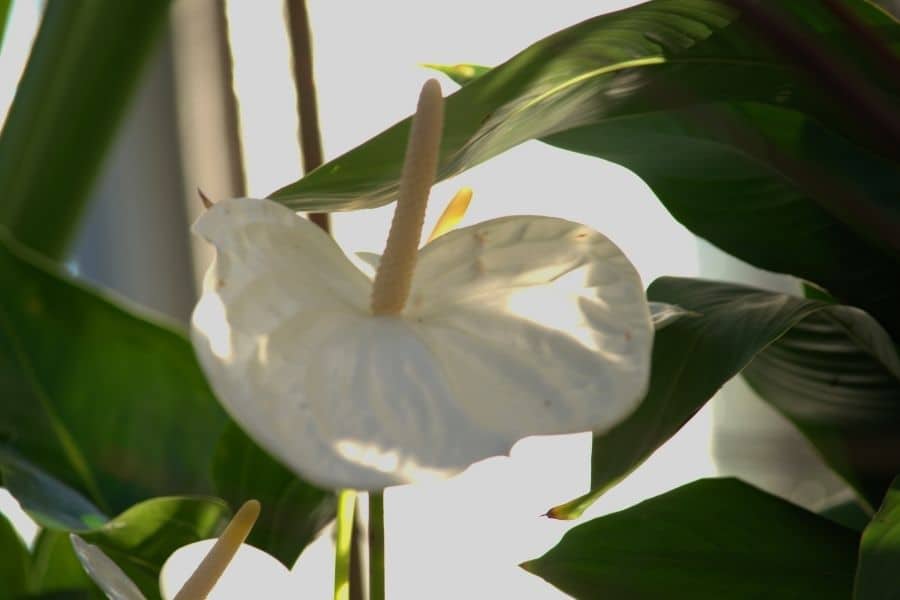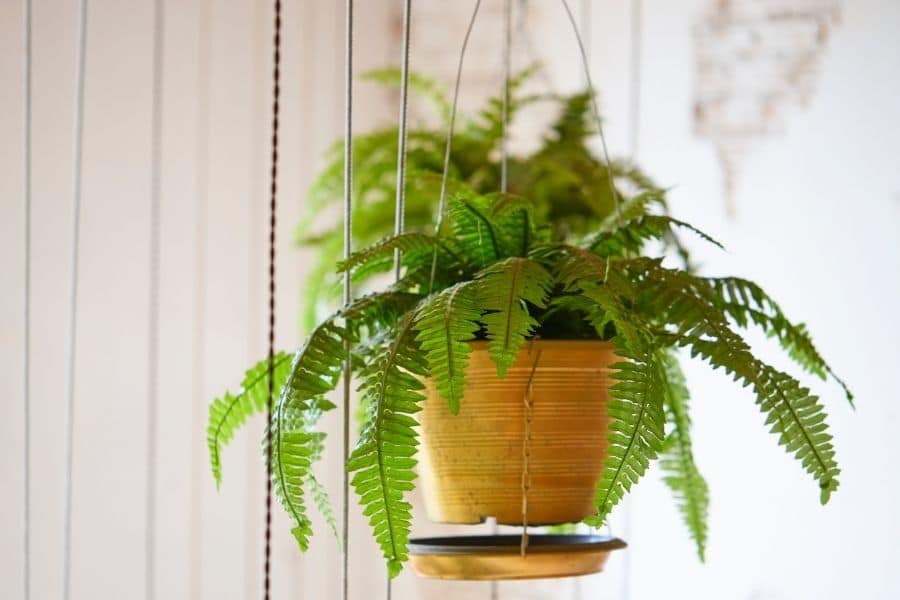Are you constantly running out of breath? Do you feel like your nose is always congested? If so, it’s possible that the air in your home or office may be too humid.
Humidity in the air can lead to a number of problems, including dry skin, headaches and respiratory problems. Problems with humidity can happen in any season. Though summer is thought to be the worst, actually winter is when we shut the doors and windows and trap in all that excess moisture, leading to indoor humidity in the form of winter mold or dampness.

One way to combat this problem is by adding indoor plants that absorb humidity in the air. Plants are natural dehumidifiers because they absorb water from their surroundings through their leaves and release moisture back out through transpiration. This process helps regulate humidity levels and create fresh air in any space! And some plants are better than others.
How do you reduce humidity in the air naturally?
Plants! But which plants absorb humidity? Plants with waxy or hairy leaves such as cacti or those that have large surface areas are the best to lower indoor humidity.
Most plants that like moist soil in humid areas are more likely to evolve this adaptation, but some plants in arid areas with little rainfall may also be able to process moisture in this manner.
If you want to reduce moisture in a natural way, you need at least one plant that is a natural dehumidifier such as spider plants and peace lilies!

These humidity absorbing houseplants are tough enough to survive even when neglected, which makes them perfect for busy people who don’t have time to water their plants every day.
We’ve compiled a list of our favorite picks to help guide you to the right indoor plants for your needs. If you’re looking for something a little more high maintenance, we’ve also included some tropical beauties that won’t disappoint you!
1. Peperomia
Peperomia , also known as “pennywort,” is an excellent plant to help reduce humidity indoors. The leaves of this evergreen plant are fleshy and small, adding up to its large surface areas that absorb moisture in the air.

Peperomia plants are one of the natural dehumidifying plants that prefer to stay moist but not wet all day, so be sure to water them on a rotating schedule to keep the soil moist. If you’re looking for a plant that will add a bit of greenery to your home, but without having time to take care of it properly, this is the perfect little guy for you!
2. Golden Pothos (Epipremnum aureum)
Pothos, also called “devil’s ivy,” is a climbing vine that will grow atop any surface. These plants have heart-shaped leaves that are thick and glossy, which helps them absorb water easily. Pothos can thrive indoors in even the poorest of conditions, meaning it’s easy to care for but doesn’t require constant attention. Just place pothos in an area with excessive moisture and leave it be.

3. English Ivy
English ivy is another common vine that’s easy to care for and is one of the best dehumidifying plants, making it a good choice for those who are just starting out with house plants. It’s one of the hardy indoor plants that can survive in low light levels and tolerates dryness as well as dampness. This makes it a good plant for the shower or bathroom because it will grow best in those conditions.

If you’re interested in adding an English ivy to your home, make sure that you trim off older parts of the vine regularly to promote growth and keep it from taking over!
4. Aloe Vera
Aloe vera, or “true aloe,” is a succulent plant that has been used medicinally for centuries. This unique plant reduces moisture, and can be grown indoors year-round and looks great in any room with its striking green leaves! Aloe vera plants require very little attention, making them perfect low-maintenance companions–simply place them somewhere sunny and be sure to water them every few weeks!

5. Spider Plant
Spider plant Is a favorite among indoor gardeners due to their diversity, adaptability and easy-care nature. This hardy little guy grows quickly and easily. It is ideal to keep in hanging pots to absorb the humidity in a more effective way. If you’re looking for plants that absorb humidity without much of an investment, this is definitely the perfect plant for you!

6. Lilac
For something a bit more tropical and flowery, try an amazing lilac plant. This beautiful flowering shrub is a great alternative to the traditional houseplant—it looks pretty and requires less care than most other options. And, it serves a great purpose: reducing humidity!
However, the best part about growing your own lilacs is that the leaves and flowers can be used for medicinal purposes including reducing fever and aiding digestion. Simply put the leaves and flowers into hot water to make a fragrant tea!

7. Peace Lily
Peace Lily is the perfect indoor plant to keep in your home if you suffer from allergies or asthma. They’re also a great option for those with breathing problems such as emphysema, due to their peace lily’s ability to remove air pollutants like formaldehyde and xylene from indoor air. These beautiful plants prefer sunlight that is not direct and can grow under fluorescent lighting

8. Purple Waffle Flower
Purple waffle plants are a bright and beautiful addition to any home. They thrive in indirect sunlight and need water only once every few weeks. Purple waffles also remove carbon monoxide from the air as they grow, yet another benefit of this easy-to-grow plant!

9. Windmill Palm (Chrysalidocarpus lutescens)
Windmill palm trees are an excellent choice if you have a lot of space, as they grow to be quite large. This plant is very low-maintenance and thrives in poor soil conditions, meaning that it’s a great addition to any low-light indoor environment. They love reducing humidity in the air surrounding them and look great in any room!

10. Boston Fern (Nephrolepis exaltata)
Boston ferns can absorb air moisture and are the perfect plant for those who don’t want too much responsibility. These plants grow well in indirect light, preferring medium light levels over direct light or darkness, and can tolerate both low-humidity environments as well as moist ones. A Boston fern is also beautiful to look at!

11. Bamboo Palm (Chamaedorea seifrizii)
Bamboo palms are a great addition to any home, especially if you’re looking for something with a tropical flair. These humidity absorbing plants require medium indirect sunlight and regular watering but can add a beautiful accent color to your room!

12. Air Plant (Tillandsia)
Tillandsia belongs to the bromeliads family. The plant is best put in a place with filtered sunlight throughout the day. It is quite effective in reducing humidity since this ornamental plant absorbs nutrients and moisture from the air indoors. Besides being effective in reducing high humidity, Tillandsia is showy and eye-grabbing which makes it an ideal choice for a houseplant.

We hope that this article has helped you learn more about the best plants to reduce humidity indoors. Excess humidity can be a problem for your lovely home but with these natural dehumidifier plants, your room can be mould-free, free of clammy air, and beautiful too!
What does a plant need most? A planter of course, check out how we helped this restaurant to have a private, comfortable health-minded restaurant setting that offered a high-end look while creating a fun, intimate dining experience:

Pura Vida Las Olas, Miami
Creating a commercial space like this is challenging for clients as their customers often want privacy from the street while also having both an open and refreshing experience once inside. Our planters were the perfect solution!
View ProjectIf you need a little more inspiration in choosing the best plant for your care capacity, we recommend downloading our expert guide on how to care for houseplants and some of the most popular indoor plant varieties! However, dear plant lovers, if you’re ready to start planting, it’s time you have a look at our planters!